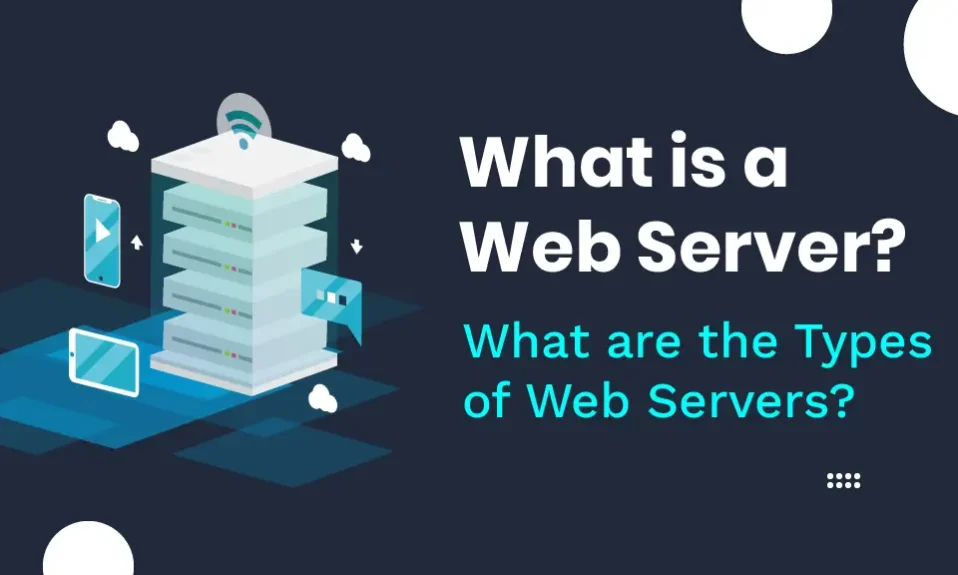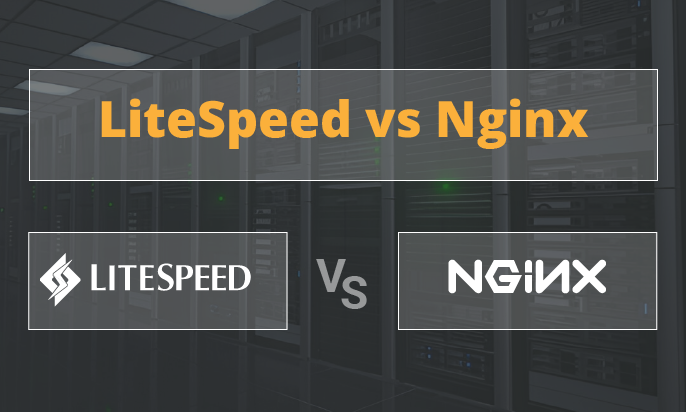Have you ever wondered how websites magically appear on your screen whenever you type a URL into your browser? Behind this seemingly simple process lies the complex machinery of web servers, which play a pivotal role in delivering digital content to users worldwide. Yet, for many, the inner workings of web servers remain a mystery, leaving them in the dark about the technology powering the online experiences they encounter daily. In this article, we shed light on this enigma, offering a beginner-friendly exploration of web servers and their significance in the digital ecosystem. Whether you’re a curious individual seeking to expand your tech knowledge or a website owner aiming to optimize performance, this article empowers you with the insight needed to navigate the digital realm effectively.
Key Takeaways:
- Web servers are essential for hosting and delivering web content.
- There are various types of web servers available, each with its own features and strengths.
- Understanding web server types will help you choose the right one for your specific needs.
- Popular web server options include Apache, Nginx, and Microsoft IIS.
- Factors such as performance, scalability, and security should be considered when selecting a web server.
What is a Web Server?
A web server is a crucial component of the internet infrastructure that serves as the foundation for delivering web content to users worldwide. At its core, a web server is a software application or program installed on a physical or virtual server machine. Its primary function is to receive requests from client devices, such as web browsers, and deliver the requested web pages, files, or applications.
To put it simply, a web server is a specialized software or hardware device designed to process and respond to client requests for web content. It acts as a mediator between the client device and the requested resources stored on the server.
Web servers play a pivotal role in the client-server model of communication on the internet. When a user enters a web address (URL) into their browser’s address bar and hits enter, the browser sends a request to the corresponding web server hosting the requested content. The web server then processes this request, retrieves the requested files or data from its storage, and sends them back to the client browser for display.
Historical Context of Web Servers:
Delving into the historical evolution of web servers unveils a fascinating journey marked by significant milestones and technological advancements. From the rudimentary beginnings of static file servers to the sophisticated, high-performance systems of today, the evolution of web servers mirrors the rapid expansion of the internet itself. Early web servers primarily functioned as file servers, simply storing and serving static HTML pages. However, with the advent of dynamic web content, the demand for more robust server technologies grew, leading to the development of advanced server software capable of executing server-side scripts, processing databases, and handling complex web applications.
Additionally, the evolution of web server protocols, such as HTTP (Hypertext Transfer Protocol), has played a pivotal role in shaping the capabilities and efficiency of web servers. The transition from HTTP/1.1 to HTTP/2, for example, introduced significant performance enhancements, including multiplexing, header compression, and server push, optimizing the delivery of web content and improving the overall user experience.
Key Components and Functionality of Web Servers:
- HTTP Protocol: Most web servers use the Hypertext Transfer Protocol (HTTP) to facilitate communication between clients and servers. HTTP defines the rules and standards for requesting and transmitting web content over the internet.
- File Storage: Web servers store website files, documents, images, multimedia, and other resources in a designated directory structure. These files are organized and accessed based on their URLs or file paths.
- Processing Requests: Upon receiving a request from a client, the web server processes the request based on the type of content requested (e.g., HTML page, image file, video stream). It locates the requested resource, retrieves it from storage, and sends it back to the client in the appropriate format.
- Response Codes: Web servers generate and send HTTP response codes to indicate the status of a client’s request. Common response codes include 200 (OK), 404 (Not Found), 500 (Internal Server Error), and others, which help troubleshoot and diagnose issues with web requests.
- TCP/IP Stack: The Transmission Control Protocol/Internet Protocol (TCP/IP) stack forms the foundation of internet communication, providing the necessary framework for data transmission between devices connected to the internet. Web servers leverage the TCP/IP protocol suite to establish reliable connections, manage data packets, and ensure seamless communication across networks.
- Server Hardware and Software: The hardware and software components of a web server collectively determine its performance, scalability, and reliability. High-performance servers equipped with robust hardware resources, such as processors, memory, and storage, can efficiently handle large volumes of incoming requests and deliver web content with minimal latency. Furthermore, the choice of server software, whether open-source solutions like Apache and Nginx or proprietary offerings like Microsoft IIS and LiteSpeed, significantly impacts the server’s capabilities and compatibility with various web technologies and frameworks.
How Web Servers Work?
Web servers are the backbone of the internet, facilitating the delivery of web pages and resources to millions of users around the world. Understanding how web servers work is essential for anyone involved in web development, hosting, or online business operations.
At its core, a web server is a software program that runs on a physical or virtual machine and responds to requests from client devices, such as web browsers, by delivering the requested web content. This interaction between the web server and client devices follows the client-server model, a fundamental concept in computer networking.
In the client-server model, the web server acts as the central hub, processing and responding to client requests. The client devices, typically web browsers, initiate these requests for specific web resources, such as HTML files, images, or videos. To facilitate communication between the server and clients, a set of rules called protocols are used. The most common protocol for web server operation is Hypertext Transfer Protocol (HTTP), which enables the transfer of web content over the internet.
When a client device sends a request to a web server, it includes the URL (Uniform Resource Locator) or the address of the desired web resource. The server analyzes this request and locates the requested resource within its file system. Once found, the server retrieves the resource and sends it back to the client in response.
In addition to delivering web resources, web servers can also perform various other tasks, such as handling form data, managing user authentication, and executing server-side scripts. These functionalities allow web servers to support dynamic web applications and store data in databases.
The Client-Server Model:
“The client-server model is a widely used paradigm in computer networking where clients (user devices) make requests to servers (high-powered computers) that store and deliver resources.”
Overall, web servers play a crucial role in the operation of the internet, serving as the bridge between client devices and web resources. Understanding how they work, especially the client-server model and the role of protocols like HTTP, is essential for anyone looking to build, host, or maintain a website or web application.
Types of Web Servers:
Web servers come in various forms, each designed to fulfill specific requirements and cater to different workloads. Understanding the different types of web servers is crucial for selecting the most suitable option based on factors such as performance, scalability, security, and compatibility with web applications. Below are the main types of web servers along with their characteristics and use cases:
Apache HTTP Server:
Apache HTTP Server, often referred to simply as Apache, stands as one of the most widely used and venerable web server software in existence. Launched in 1995, Apache boasts a rich history of reliability, performance, and versatility, making it a preferred choice for hosting websites across a broad spectrum of industries and applications. Operating under an open-source model, Apache offers extensive customization options, robust security features, and seamless integration with popular web technologies and frameworks, including PHP, Perl, and Python. Its modular architecture allows administrators to tailor the server’s functionality to meet specific requirements, while its extensive documentation and active community support ensure accessibility and troubleshooting assistance for users of all skill levels.
Nginx (Engine-X):
Nginx, pronounced as “engine-ex,” represents a formidable contender in the realm of web server software, renowned for its lightweight architecture, exceptional performance, and scalability. Initially released in 2004, Nginx quickly gained traction among web developers and system administrators seeking a high-performance alternative to traditional web servers like Apache. One of Nginx’s standout features is its event-driven, asynchronous architecture, which enables it to handle concurrent connections and manage resource allocation efficiently, resulting in superior throughput and response times, especially under high traffic loads. Additionally, Nginx excels in serving static content, reverse proxying, and load balancing, making it an ideal choice for powering modern web applications, APIs, and content delivery networks (CDNs).
Microsoft Internet Information Services (IIS):
Developed by Microsoft, Internet Information Services (IIS) stands as the default web server software for Windows-based servers and environments. With its integration into the Windows Server operating system, IIS offers seamless compatibility and tight integration with other Microsoft technologies, such as .NET Framework, ASP.NET, and Microsoft SQL Server, making it a preferred choice for hosting ASP.NET web applications and enterprise-level websites. IIS boasts a user-friendly management interface, extensive support for Windows authentication mechanisms, and robust security features, including SSL encryption and request filtering. While historically perceived as primarily catering to Windows-centric environments, IIS has evolved to support open-source technologies and frameworks, expanding its versatility and appeal to a broader audience of developers and system administrators.
LiteSpeed Web Server:
LiteSpeed Web Server emerges as a performance-oriented, high-efficiency web server software designed to deliver blazing-fast web hosting solutions while conserving server resources and minimizing operational costs. Leveraging its proprietary event-driven architecture and advanced caching mechanisms, LiteSpeed excels in accelerating website loading speeds, reducing server response times, and optimizing resource utilization, making it an ideal choice for high-traffic websites, e-commerce platforms, and content-heavy applications. Moreover, LiteSpeed offers seamless compatibility with existing Apache configurations, allowing for easy migration and integration into Apache-based hosting environments without compromising compatibility or functionality. Additionally, LiteSpeed boasts comprehensive security features, including anti-DDoS protection, mod_security compatibility, and IP-based access control, safeguarding websites against various cyber threats and vulnerabilities.
Node.js:
Node.js represents a unique approach to web server development, leveraging JavaScript as its primary programming language and adopting a non-blocking, event-driven architecture. Introduced in 2009, Node.js has gained popularity for its ability to build fast, scalable, and real-time web applications, thanks to its lightweight runtime environment and asynchronous I/O capabilities. Unlike traditional web servers, which rely on multi-threading or process-based models, Node.js employs a single-threaded, event-driven paradigm, allowing for efficient handling of concurrent connections and I/O operations. This makes Node.js particularly well-suited for building data-intensive, high-performance applications, such as chat servers, streaming platforms, and IoT (Internet of Things) devices. Additionally, Node.js boasts a vibrant ecosystem of libraries, frameworks, and modules, empowering developers to streamline development workflows and accelerate time-to-market for their projects.
Factors to Consider when Choosing a Web Server
When selecting a web server, several factors need to be taken into consideration in order to ensure optimal performance, scalability, and security for your website.
Performance
The performance of a web server plays a crucial role in determining the speed and responsiveness of your website. Factors to consider include:
- Processing power: A web server with sufficient processing power can handle high volumes of website traffic without experiencing slowdowns.
- Caching capabilities: Caching allows the server to store copies of frequently accessed content, reducing the need for repeated data retrieval and improving load times.
- Load balancing: Load balancing distributes incoming web traffic across multiple servers, preventing any one server from becoming overloaded and ensuring consistent performance.
Scalability
Scalability refers to a web server’s ability to handle increasing levels of traffic and accommodate future growth. Consider the following factors when assessing a server’s scalability:
- Scalable architecture: Look for a web server that supports horizontal scalability, allowing you to add additional servers as demand increases.
- Elasticity: An elastic web server can automatically adjust its resources based on traffic fluctuations, ensuring consistent performance during peak periods.
- Flexible deployment options: A web server that offers cloud-based deployment can provide the scalability needed to handle sudden spikes in traffic.
Security
Ensuring the security of your website and protecting sensitive user data is of utmost importance. Consider the following security features when choosing a web server:
- Encrypted communications: Look for a web server that supports the HTTPS protocol, which encrypts data transmitted between the server and the user’s browser.
- Firewall capabilities: A web server with built-in firewall protection can help prevent unauthorized access and mitigate the risk of attacks.
- Regular updates and patches: Choose a web server that is actively maintained and regularly updated to address security vulnerabilities.
In summary, selecting the right web server involves considering factors such as performance, scalability, and security. By choosing a web server that aligns with your website’s requirements and growth plans, you can ensure a seamless and secure user experience.
Best Practices for Web Server Configuration
When it comes to web server configuration, implementing the right security measures and optimization techniques is crucial for maintaining a secure and high-performing website. By following these best practices, you can ensure that your web server is properly configured to protect against potential vulnerabilities and maximize overall performance.
1. Regularly Update and Patch Your Web Server
Keeping your web server up to date with the latest software patches is essential for protecting against security vulnerabilities. Regularly check for updates from your web server provider and apply them promptly to ensure that your server is equipped with the latest security features.
2. Implement Secure Access Controls
Configure strict access controls to limit who can connect to your web server and access resources. Use strong passwords and consider implementing multi-factor authentication to add an extra layer of security. Additionally, regularly review and audit user access privileges to make sure they align with the principle of least privilege.
3. Utilize SSL/TLS Encryption
Enable SSL/TLS encryption to secure data transmission between the web server and the client. This ensures that sensitive information, such as login credentials and personal data, is protected from unauthorized access. Obtain and install an SSL/TLS certificate from a trusted certificate authority to enable secure HTTPS connections.
4. Harden Your Server Configuration
Take measures to harden your server’s configuration by disabling unnecessary services, removing default or sample files, and limiting the exposure of sensitive information. Regularly review and update your server’s configuration to ensure that it aligns with the latest security best practices.
5. Monitor and Log Server Activity
Implement a robust logging mechanism to track and monitor server activity. Log files can provide valuable insights into potential security threats and performance issues. Regularly analyze and review log files to detect any abnormal or suspicious activities, allowing you to take appropriate actions promptly.
6. Optimize Server Performance
Improve web server performance by implementing various optimization techniques. These may include caching mechanisms, compression, load balancing, and content delivery networks (CDNs). Choose optimization strategies based on your specific website requirements and regularly assess their effectiveness to ensure optimal performance.
Summary:
Proper web server configuration is essential for ensuring the security and performance of your website. By following best practices such as keeping your server up to date, implementing access controls, utilizing encryption, hardening your server configuration, monitoring server activity, and optimizing performance, you can safeguard your website and provide a seamless user experience. Take the time to configure your web server correctly, and enjoy the benefits of a secure and high-performing online presence.
| Best Practices for Web Server Configuration | Benefits |
|---|---|
| Regularly Update and Patch Your Web Server | – Guards against security vulnerabilities – Enhances server stability |
| Implement Secure Access Controls | – Prevents unauthorized access – Strengthen system security |
| Utilize SSL/TLS Encryption | – Protects sensitive data – Establishes secure connections |
| Harden Your Server Configuration | – Reduces attack surface – Enhances server security |
| Monitor and Log Server Activity | – Identifies security threats – Facilitates troubleshooting |
| Optimize Server Performance | – Improves website loading speed – Enhances user experience |
Conclusion
In conclusion, web servers play a crucial role in the internet infrastructure by enabling the hosting and delivery of websites. Throughout this article, we have explored the definition and function of web servers, the client-server model, and the different types of web servers available.
Apache, Nginx, and Microsoft IIS are among the most popular web server options, each with their own unique features and advantages. While Apache is renowned for its open-source nature, Nginx stands out for its high-performance capabilities, and Microsoft IIS caters specifically to Windows-based systems.
When choosing a web server, it is important to consider factors such as performance, scalability, and security. Additionally, implementing best practices for web server configuration, including security measures and optimization techniques, is crucial for maintaining a robust and efficient website.
By understanding the fundamentals of web servers and making informed decisions based on specific requirements, website owners and administrators can ensure seamless website hosting and delivery, ultimately contributing to a positive user experience on the internet.
FAQ
What is a web server?
A web server is a computer program that delivers web content to clients over the internet. It processes incoming requests from clients and sends out the appropriate responses, allowing websites to be accessed and viewed.
What are the types of web servers?
There are several types of web servers, including Apache, Nginx, Microsoft IIS, lighttpd, and LiteSpeed, each with its own features, advantages, and suitability for different scenarios.
What is the function of web servers?
The primary function of web servers is to host and serve websites to users. They handle incoming requests for web content, retrieve the requested files or data, and send them back to the requesting client, allowing users to access websites and web applications.
How do web servers work?
Web servers follow the client-server model, where clients (such as web browsers) send requests to servers, and servers respond by delivering the requested content. This communication is facilitated using protocols like HTTP (Hypertext Transfer Protocol).
What are the features of the Apache web server?
The Apache web server is an open-source server known for its flexibility, stability, and robust performance. It supports various operating systems, offers extensive customization options, and has a large and active community for support.
What are the benefits of the Nginx web server?
Nginx is a high-performance web server known for its efficiency, scalability, and ability to handle high traffic loads. It uses an event-driven, asynchronous architecture and excels in serving static content and acting as a reverse proxy.
What are the notable features of Microsoft IIS?
Microsoft Internet Information Services (IIS) is a web server designed for Windows-based systems. It offers integration with other Microsoft products, supports various programming languages, and provides robust security features.
What are some other web server options?
Besides Apache, Nginx, and Microsoft IIS, there are other web server options like lighttpd and LiteSpeed. These servers also offer unique features and performance characteristics, and the choice depends on specific requirements and preferences.
What factors should be considered when choosing a web server?
When selecting a web server, factors such as performance, scalability, security features, compatibility with platforms and applications, community support, and cost-effectiveness should be taken into account.
What are some best practices for web server configuration?
Best practices for web server configuration include implementing security measures like SSL/TLS encryption, regularly updating server software, using secure authentication methods, optimizing server performance, and monitoring and logging server activities.




